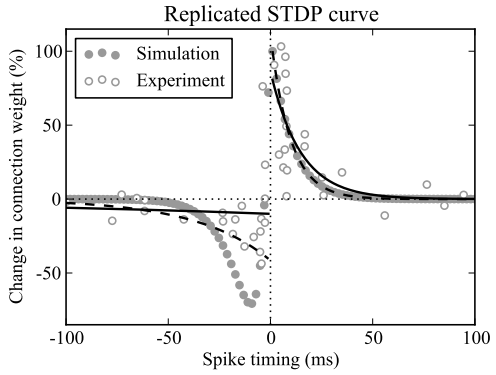For a learning rule to be biologically plausible, it has to only depend on knowledge/information local to the neuron (no global information about the neuron population) and has to match experimental neuroscience data.
Only Neuron-Local Information
As discussed in "Simultaneous unsupervised and supervised learning of cognitive functions in biologically plausible spiking neural networks" by Bekolay et al., the effect of the PES learning rule on the decoders $\Delta \mathbf{d}_i$ is formulated as:
$$\Delta \mathbf{d}_i=\kappa \mathbf{E}a_i$$
- $\mathbf{E}$ is the error vector is mapped onto individual neurons which also represent vectors of the same dimension. Biologically, the error vector is theorized to be dopamine levels.
- $a_i$ is each neuron activity level, which in the NEF is defined as a combination of the neuron's encoder and it's activation function. See Principle 1 of the NEF for more detail.
- $\mathbf{\kappa}$ is the error scaling factor
All of these variables only require information local to the neuron. From the paper:
The key difference between this rule and backpropagation is that the
global-to- local mapping is done by imposing the portion of the error
vector space each neuron is sensitive to via its encoder. This limits
flexibility, but removes the dependency on global information, making
the rule biologically plausible.
Matching Neuroscience Experiments
To actually match experimental STDP spiking data, PES must be combined with the Bienenstock, Cooper, Munro (BCM) learning rule to enforce sparsity on the encoders. This creates the homeostatic PES rule (hPES).
This matches the following experiments from "Synaptic modification by
correlated activity: Hebb’s postulate revisited" by Bi and Poo.


Other Replications
In addition to these experiments, there are various papers that use the PES learning rule to replicate things such as a model of Fear Conditioning and a model N-Armed Bandit Task, however this evidence isn't necessarily unique to the PES learning rule.

